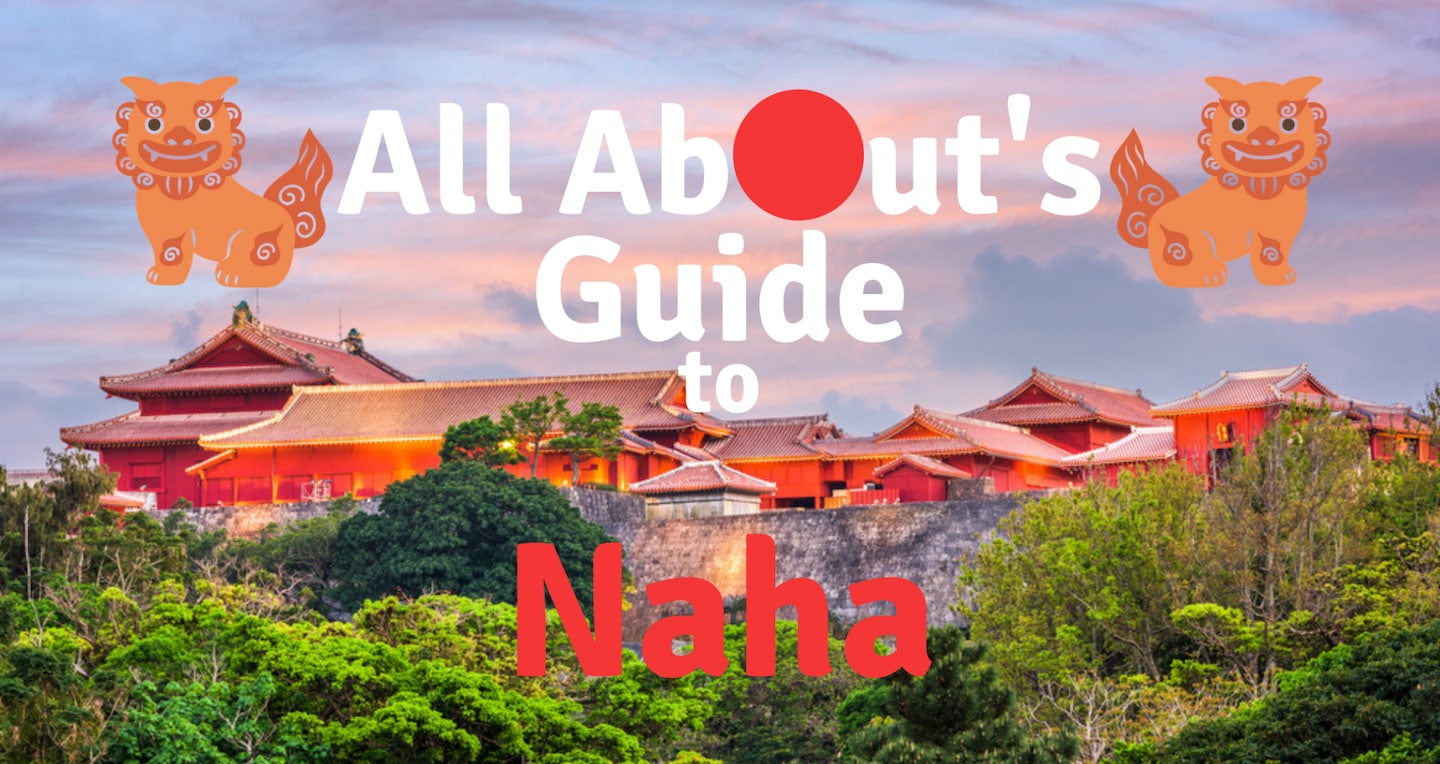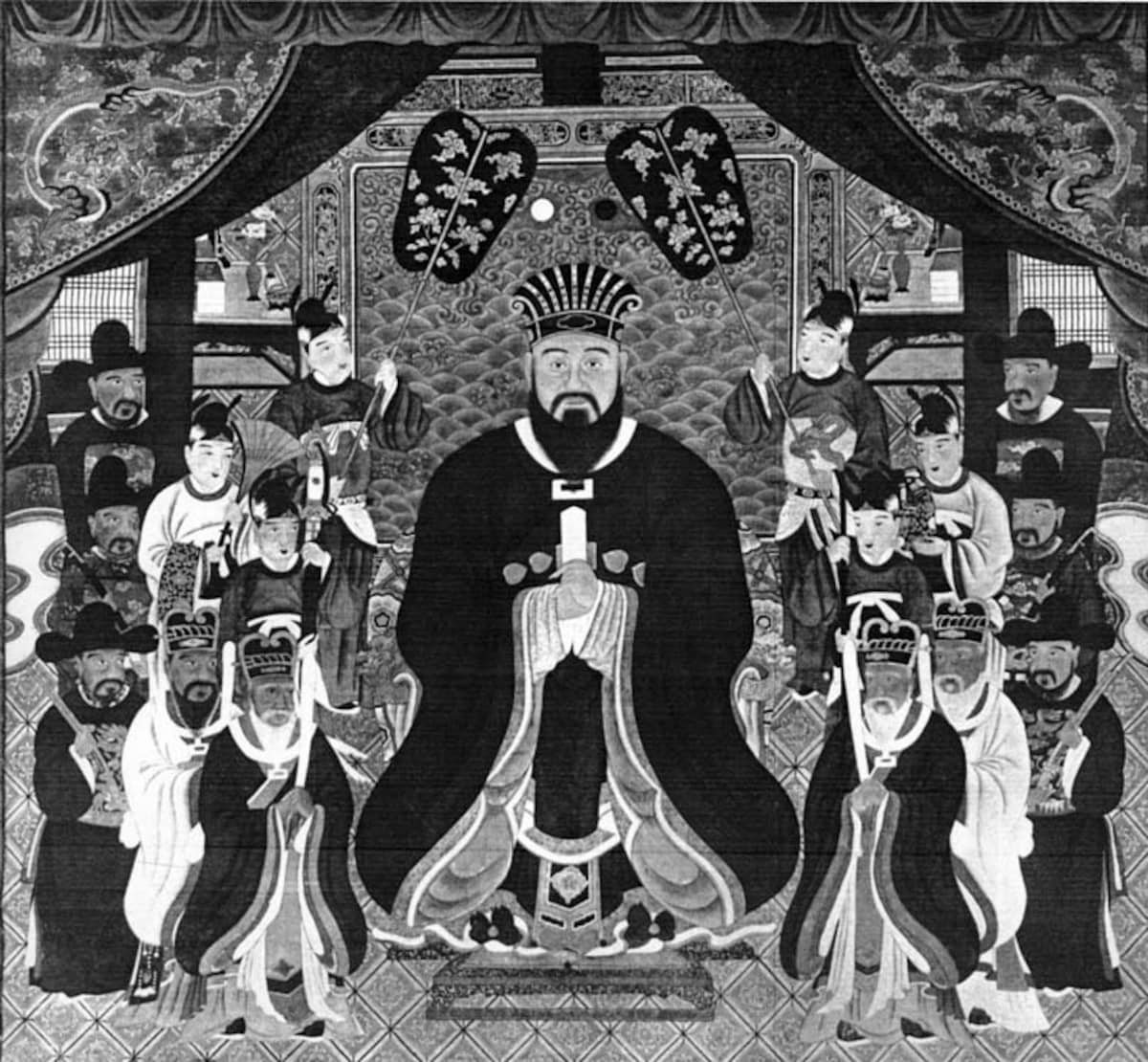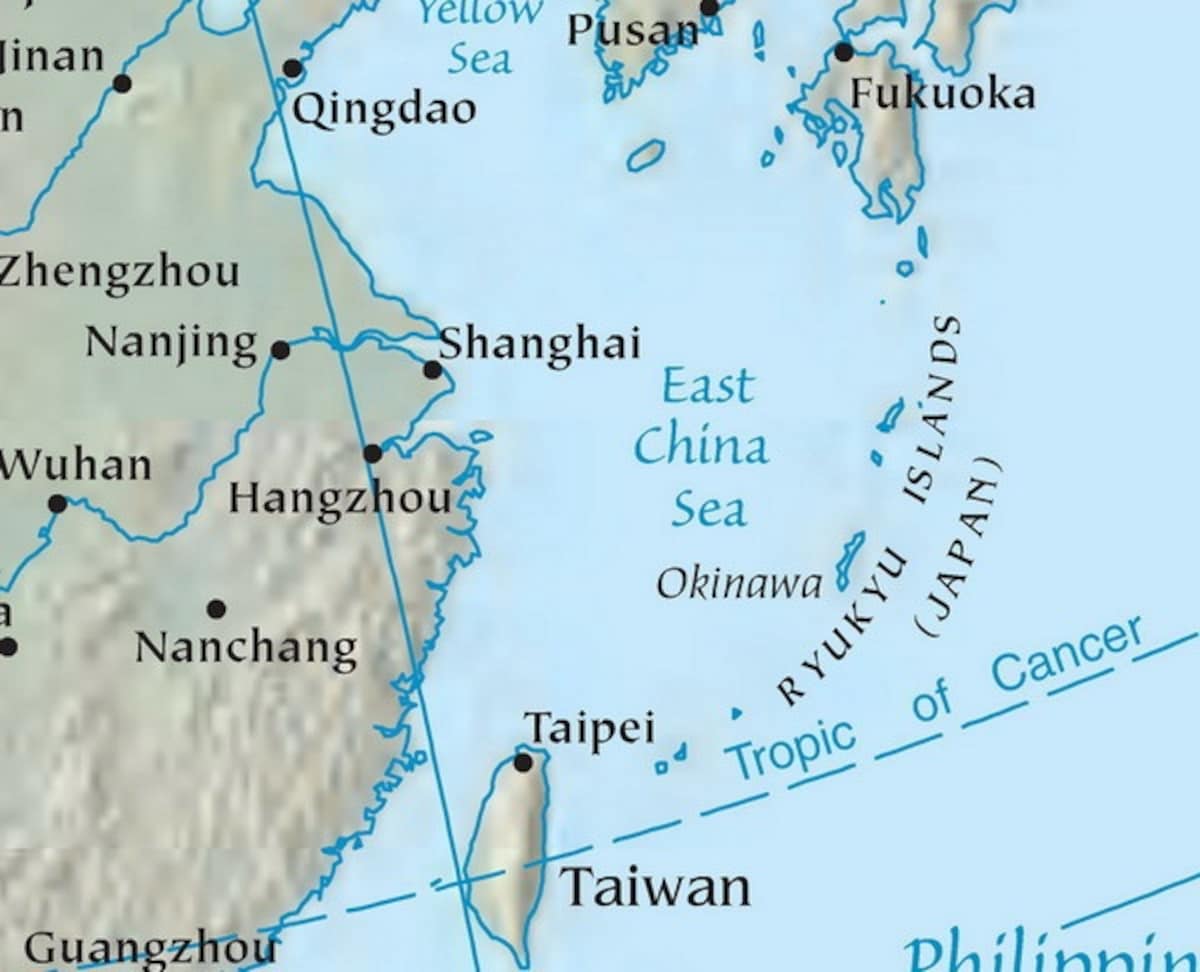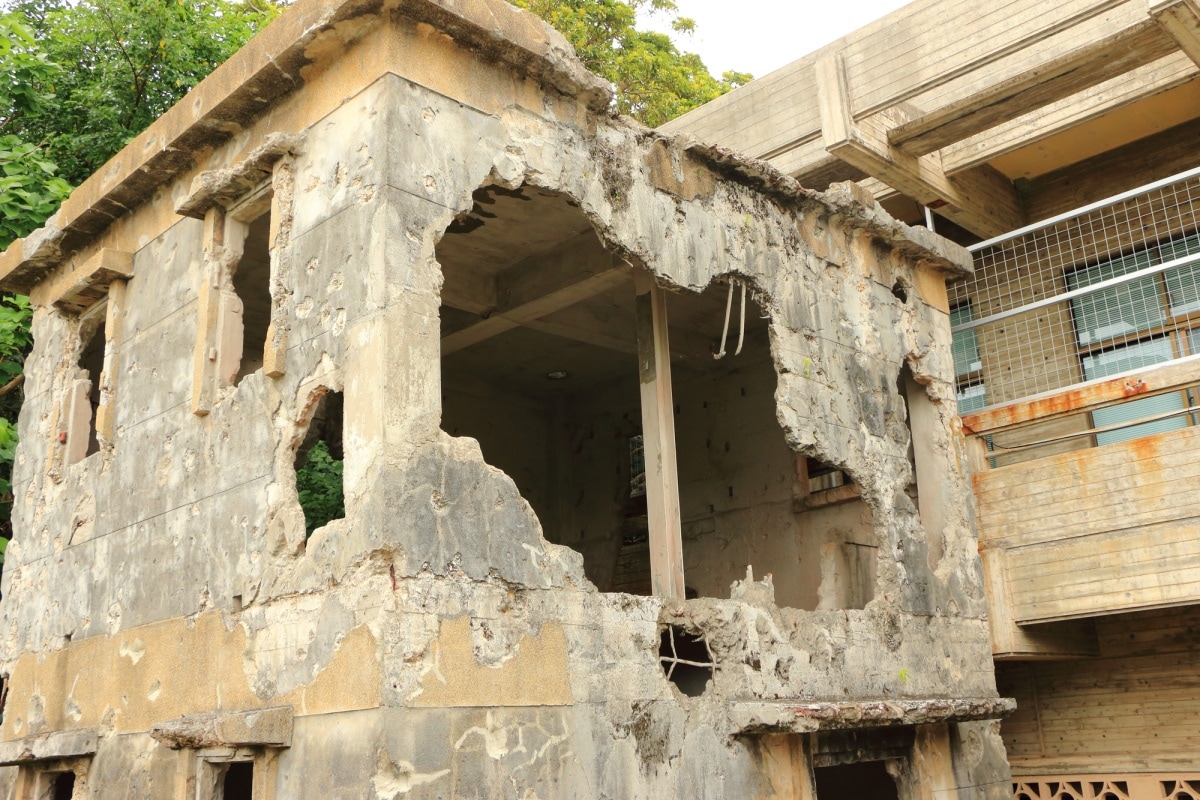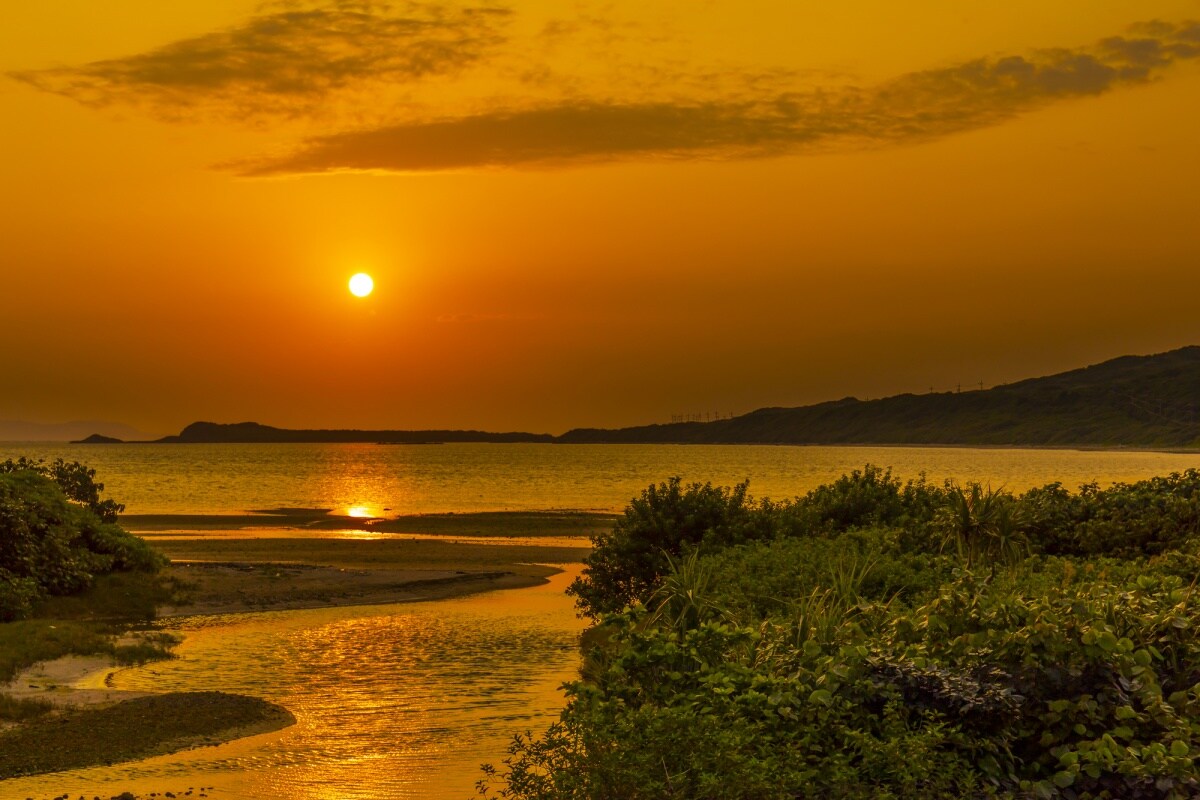All About's Guide to Naha
As the capital city of Okinawa Prefecture, Naha is a stark contrast to the other major cities of Japan. It's a unique blend of eastern and western cultures, as well as a relaxing beach town with a surprisingly rich cultural heritage that dates back centuries. If you're planning a trip to Okinawa, check out our handy guide to make the most of Naha!
By DavidNaha Key Facts
Naha (那覇) sits along the western coast of Okinawa's southern tip, and is a small city by Japanese standards. With a population of some 320,000, it pales in comparison to the likes of other capital cities like Tokyo and Osaka. Plus, Naha's seaside location gives it a uniquely relaxed vibe for a major Japanese city, and the sub-tropical flora and fauna and sandy beaches along the waters of the East China Sea make it one of the most popular tourist destinations in the country. But the city itself offers far more than just beach breezes and fun in the sun.
As a collection of southern islands, Okinawa has hot summers and incredibly mild winters, though it is pretty humid all year round. It gets a fair amount of precipitation throughout the year, but especially in June and September, which are common rainy seasons in Japan.
Naha is Okinawa's main hub, and the region's center of politics, commerce and culture. At one time Okinawa was called the Ryukyu Kingdom (1429-1875), which had strong links to mainland Asia. After being officially subsumed by Japan at the beginning of the Meiji Restoration (1868-1912) and then falling under U.S. military control in the wake of World War II, modern Naha is now a vibrant fusion of all three cultures.
Ryukyu History
The ancient Ryukyu Islands were split into three separate domains (Hokuzan, Chuzan and Nanzan) until the year 1429, when Sho Hashi consolidated power to create the unified Ryukyu Kingdom. The capital was positioned at Shuri Castle, which still sits elegantly above the city in present-day Naha.
In part due to active trade with mainland China, many Chinese immigrants made their way to Ryukyu, and with them came knowledge, technology, manpower, resources that (unsurprisingly) helped shape the cultural development of the islands. The religious and spiritual iconography of modern Naha is highly representative of that which you would see in ancient China—common sights include stone-sculpted lions though to ward off evil (called shiisaa・シーサー in Japanese) line doorways, and carved wooden dragons snake along bridges and up the sides of buildings.
The Ryukyu Kingdom's location between Kyushu and China helped it become a thriving center of international trade, particularly between the Ming and Qing dynasties of China, and the rulers of the Satsuma domain in current-day Miyazaki Prefecture. As with many historical alliances, this eventually led to bloodshed. In 1609, the feudal lord of Satsuma led an invasion to Ryukyu when they refused to help Toyotomi Hideyoshi in his attempts to conquer Korea (a vassal of China at the time). The Kingdom effectively lost its independence, yet the Sho family continued their reign for another 250 years.
Its international reach didn't stop there however. Some scholars—like Gregory Smits in his book Visions of Ryukyu: Identity and Ideology in Early-Modern Thought and Politics—claim that the Ryukyu Kingdom was deliberately allowed to thrive as a pseudo-independent state by the Shogun. The purpose of this was to act as an "information importer" during the years of Japan's policy of sakoku (鎖国・"national isolation"), which lasted about 220 years from 1663. According to Smits, this was a clandestine act; the Japanese wanted Okinawa to appear an independent state to their Chinese adversaries.
Regardless of intentions, Ryukyu was ordered to cut all ties with China around 1875 (during the Meiji Period), and four years later the Kingdom was officially annexed as the islands of Okinawa Prefecture.
World War II
It's impossible to talk about Okinawa without mentioning how it was impacted by World War II. During World War II, the Pacific Theater was the stage for some incredibly brutal battles between the Allied forces (especially the United States) and the Japanese. Although there was never any combat on mainland Japan, many of the final battles in the Pacific Theater took place on the shores of Okinawa.
Take the Battle of Okinawa, for example, which took place April 1, 1945. 12,000 U.S. soldiers lost their lives, as well as 110,000 Japanese soldiers. On top of the exorbitant human cost, the infrastructure and culture of Okinawa was also severely impacted.
Unsurprisingly, Naha was also incredibly impracted. The entire city had to be rebuilt in the subsequent years while under United States military control. In 1951, the Japanese government signed the Treaty of San Francisco, which ostensibly gave Okinawa Prefecture their independence from military control. It went into effect the following year, but (according to this article from the Japan Times) the U.S. troops basically maintained complete control. During this time, citizens of Naha and the surrounding districts were now considered citizens of the United States of America.
It was during the tenure of Richard Nixon as President of the United States that Okinawa officially became a part of Japan again in 1972, after years of discord between locals and the U.S. troops stationed there. For many residents, this meant that the future of their island prefecture was finally in their hands again.
Over subsequent years, the number of troops station in Okinawa as a whole has decreased. But the military presence is still extensive across the island, and it remains the base of operations for the majority of U.S. soldiers stationed in Japan.
Naha Today
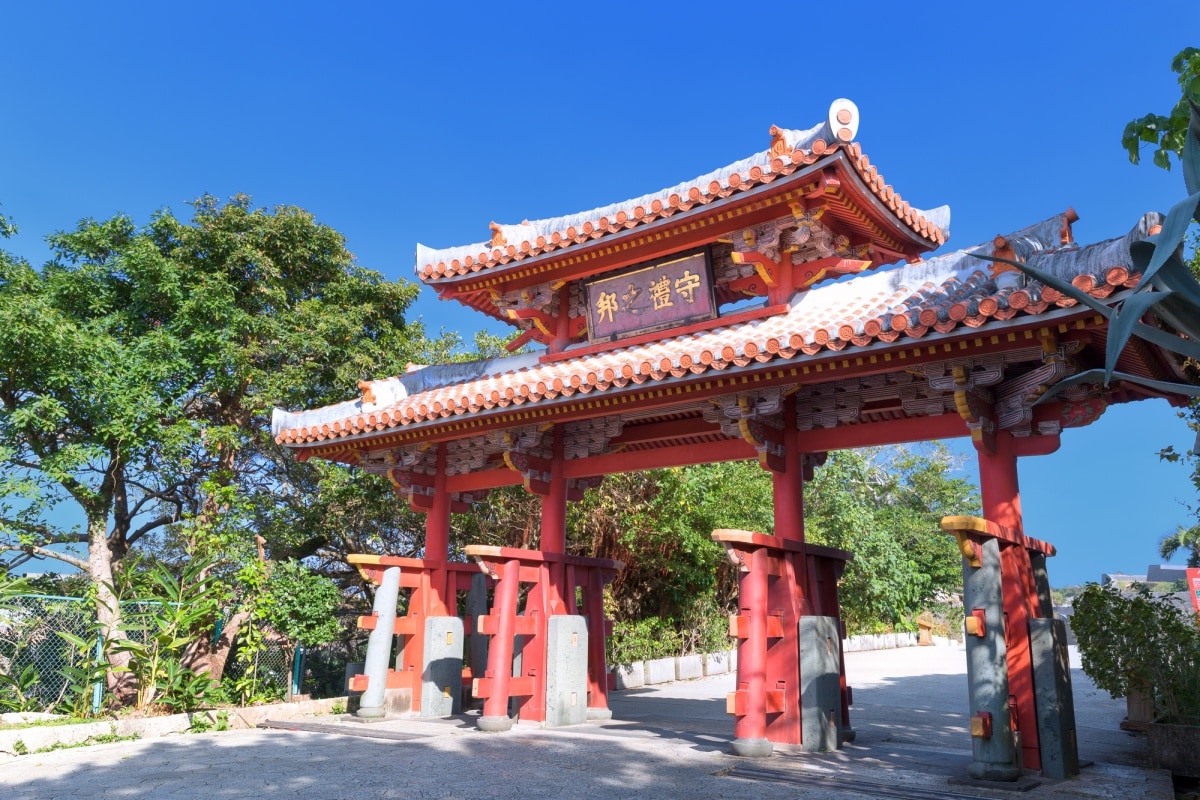
https://pixta.jp/
Today Naha is known as the "Gateway to Okinawa." It's the main point of entry for tourists, and as such it has grown into a exciting metropolitan area. There are eclectic shopping streets lined with souvenir stores, pop-culture icon shops, craft coffee bars, raving night clubs and a deluge of restaurants showcasing its extensive seafood cuisine—which is one of the very best in Japan.
There are also idyllic beaches running up Naha's western coastline providing some of the best scuba diving spots in the nation, a few structural relics of its ancient past which were rebuilt following the destruction of World War II, and a whole slew of other sights, attractions and entertainment to keep you on your toes! So let's dive in!
Top 5 Sights
Naha is a small and relatively simple city to navigate. The top 5 sights cover a variety of different themes, and it's pretty easy to tick all the boxes in a day or two. Which is great, because that gives you time to go further afield and explore even more!
5. Tsuboya Pottery District

https://pixta.jp/
Pottery-making is a long-standing cultural tradition in Naha, said to date back to the Ryukyu Kingdom. The Tsuboya pottery district is an entire area dedicated to artisanal crockery which fuses elements of crafting, nature and the island's history of cultural exchange. Tsubo-yaki (literally "Tsubo ware") is the main type of pottery on display here. The potters of Tsuboya offer liquor, rice, and salt in prayer to the kiln when starting the fire and refer to the pots as having been "born" when they emerge. While the tradition of pottery making in Okinawa remains true to its roots, modern potters are constantly iterating upon the tried and true methods in order to keep up with the changing of the times.
The Tsuboya Pottery Museum is a great first stop if you want to gain a deeper understanding of the idiosyncrasies of the local pottery craft. It puts on frequent exhibitions along with permanent displays and information in English. Pottery is a fine art in the region and the museum provides an interesting insight into that unique side of Naha's artistic history. Be sure to walk down the main thoroughfare, Tsuboya Odori, which is lined with tons of different shops showing off Tsubo-yaki, and the perfect place to pick up a souvenir!
4. Kokusai-dori Street
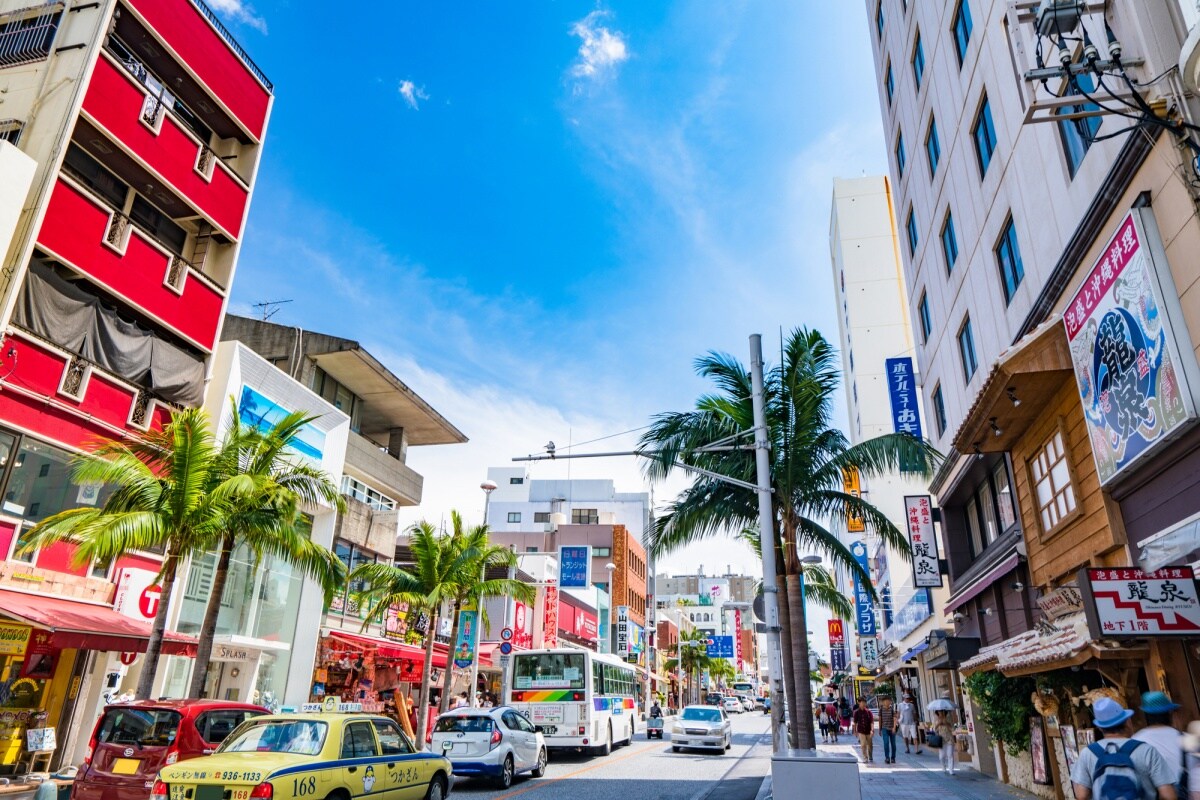
https://pixta.jp/
Kokusai-dori (literally "International Street") is a two-kilometer stretch of road that bisects Naha. Palm trees, Okinawan restaurants, American steakhouses and a vast array of global brand boutiques and local souvenir stores cushion the wide pedestrian walkways. It's like a compact stretch of a Miami boulevard with a tropical, Japanese overlay. If Naha has a real inexorable tourist magnet, it's definitely Kokusai-dori.
There are shopping malls that sell high-end designer brands, plenty of outlets to whet your whistle on the local punch, shops selling bizarre collections of pop-culture trinkets, boundless ice cream parlors, street food vendors, night clubs—and of course—Hawaiian shirt stores. So many Hawaiian shirt stores. The street constantly teems with life, and if you want a little bit of chaos to balance out the relaxed vibe of Naha, then be sure to pop down to Kokusai-dori!
3. Naminoue Shrine & Beach
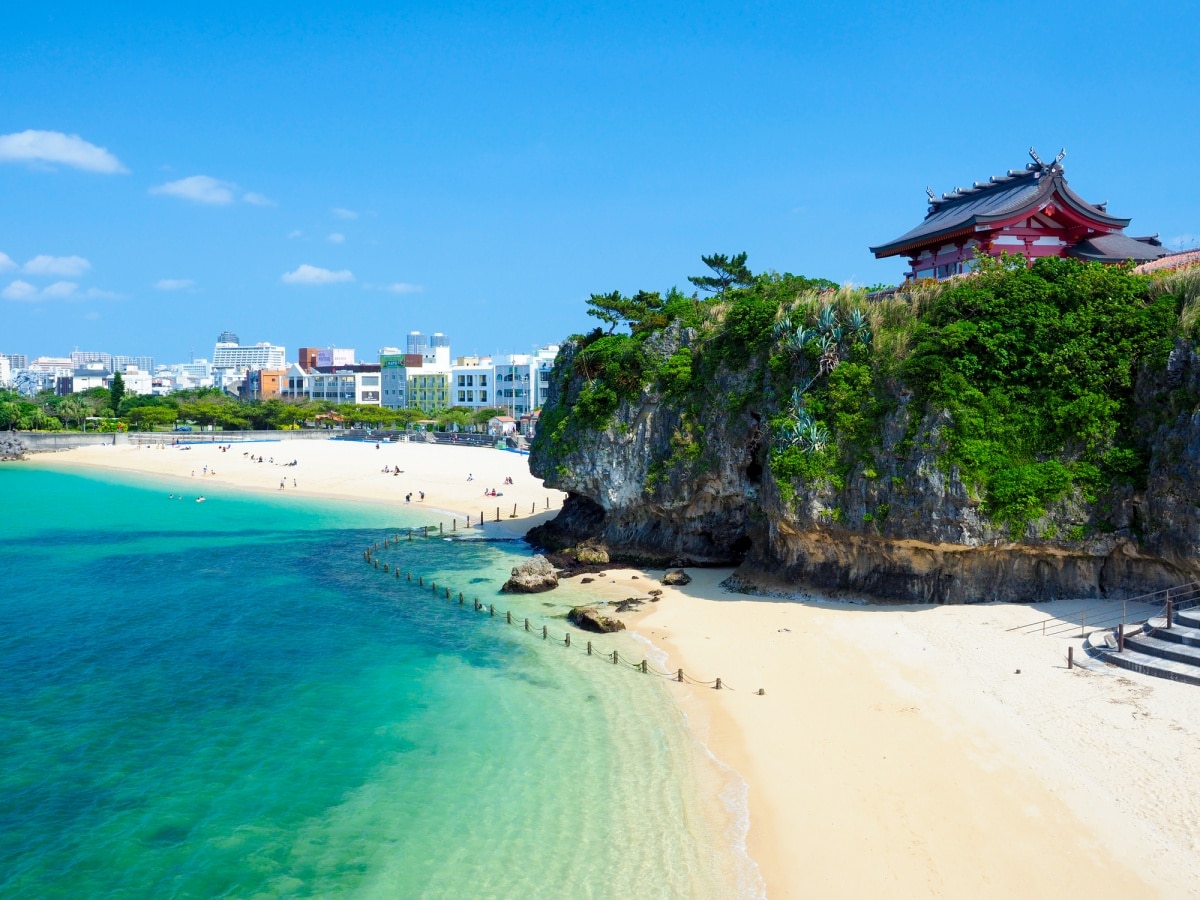
https://pixta.jp/
The Naminoue Shrine (波上宮) and the surrounding beach is one of the city's prettiest areas. The beach is a sandy coastal inlet that attracts beach bums in droves during the hotter months—which is most of the year in Okinawa! The eponymous shrine, a spiritual icon for the people of Naha, sits just above the beach on a promontory, atop a set of carved-stone steps.
In days gone-by, seafaring vessels that left the port-town of old Naha would pray to the shrine as they passed, hoping for a safe voyage in return. It was also symbolized as beacon of hope for a bright future and a rich harvest year on year. The Ryukyu kings would even visit the shrine every New Year, to pray for peace and prosperity in the island nation.
As you've probably guessed, the original shrine was destroyed during World War II. But after several reconstruction projects, the shrine office, hall of worship and main shrine hall were all fully restored by the early days of the Heisei Period in 1993. In 2006 it was designated as a Naha City Historical Site of Cultural Property, and is definitely worth a visit.
2. Scuba Diving
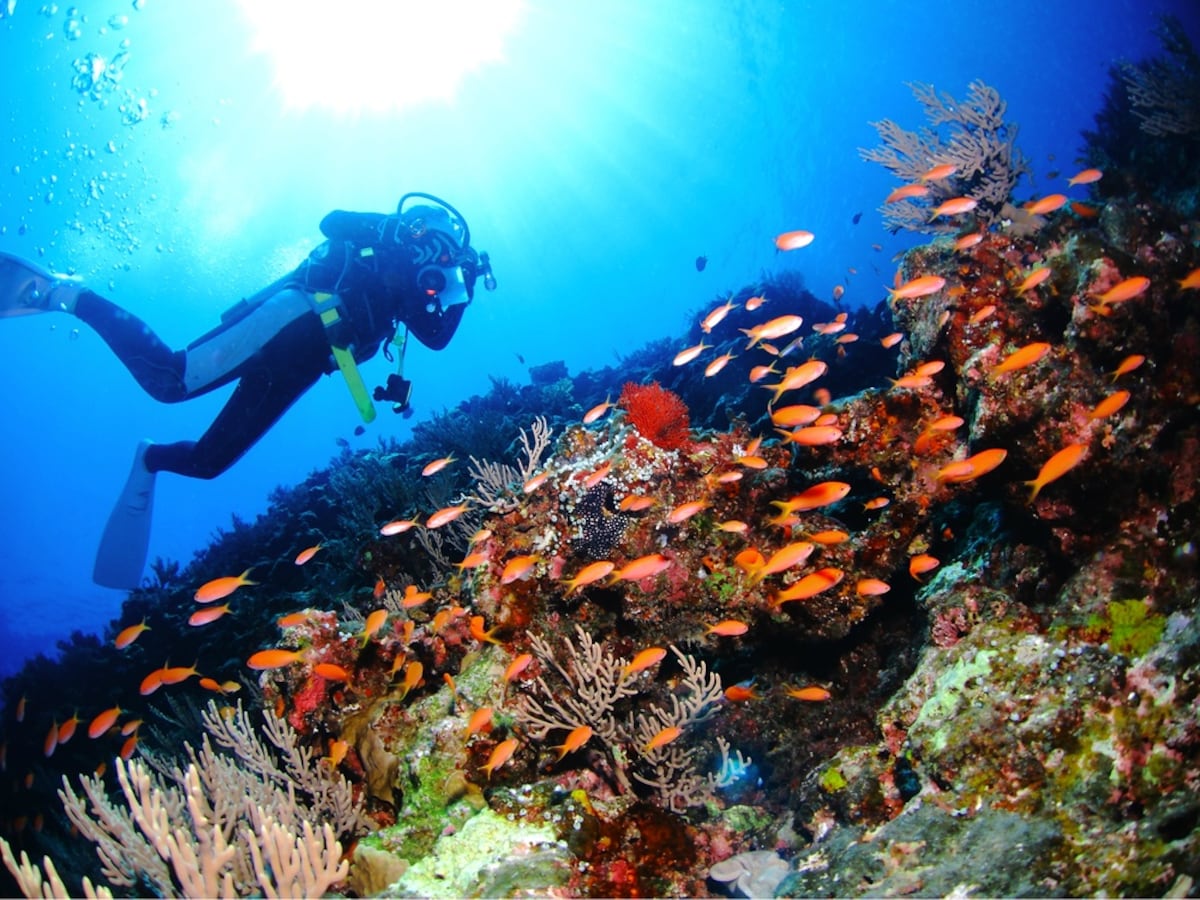
https://www.shutterstock.com/
If it isn't apparent by now, Naha's bountiful coastline is one of the main attractions of the area, thanks in part to the sheer volume of different activities available. Scuba diving is particularly popular with traveling thrill-seekers, as a colorful menagerie of aquatic creatures call the coastal waters of Naha home. You can glide through the cool, saline waters in the company of sea turtles, manta rays, whale sharks and plethora of unique shellfish, corals and tropical fish of every color!
What you're most likely to see depends heavily on the season, your previous diving experience, dive location and weather conditions on the day. Honu Honu Divers is one of the city's top dive centers. Not only do they visit dive spots all around the Okinawan coast, but they also cater to divers of all levels of ability and experience.
1. Shuri-jo Castle
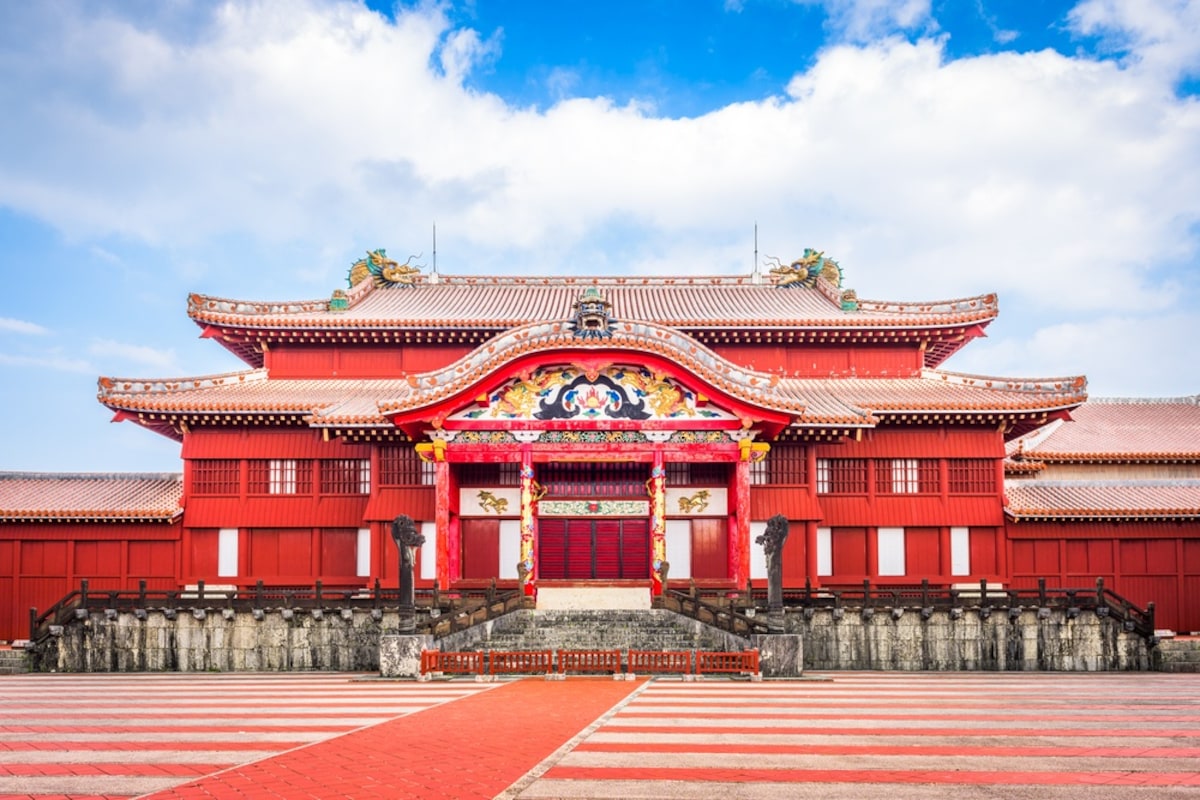
https://www.shutterstock.com/
Naha's greatest shining light is the Ryukyu Kingdom's Shuri-jo Castle (首里城). Japanese castles on the four main islands are impressive, but tend to follow a similar architectural blueprint. That's part of what makes Shuri Castle so memorable. The castle grounds sit upon the city's highest point, which allowed the Ryukyu guards to act as surveyors of the surrounding area, a common theme of medieval castles worldwide. Rather than the pale white of most castles found on the mainland, however, Shuri Castle's royal hall is a wooden structure of brilliant vermillion, emblazoned with dragons and symbolic artwork inspired by the customs of ancient China. A large courtyard of tiled strips leads up to the main hall, and it was was used for conducting various ceremonies on official occasions.
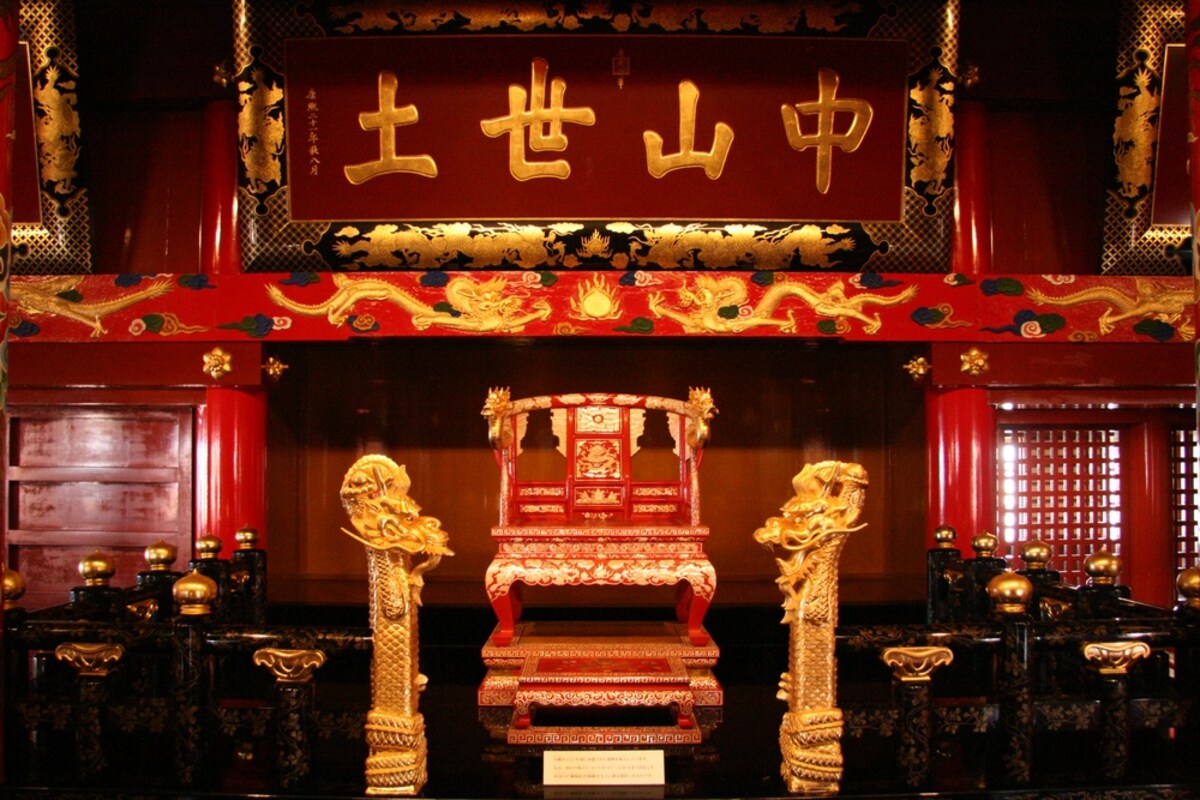
https://www.shutterstock.com/
The castle was home to the royal seat of power in the days of the Ryukyu, and the center of diplomacy and governance, as well as the core ritual network of the surrounding islands. Shuri Castle has been in existence since the early days of the Ryukyu Kingdom, but was destroyed in the Battle of Okinawa. In 1992, on the 20th anniversary of Okinawa's official reunification with Japan, the main hall and surrounding castle grounds were restored. They were subsequently opened to the public under protected status as a National Park.
Off The Beaten Path in Naha
The islands of Okinawa Prefecture cover a relatively small area. The positive upshot of this, is that there are plenty of other interesting sights and locations just beyond the city limits, and lots of places to explore!
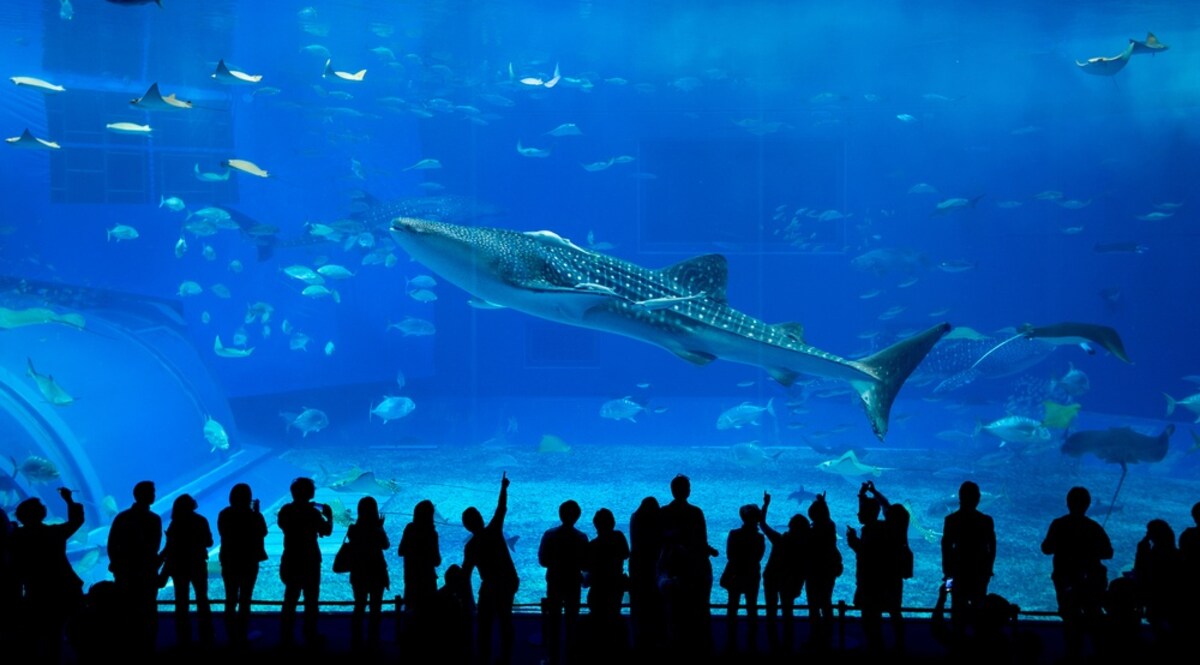
https://www.shutterstock.com/
While Okinawa's Churaumi Aquarium may be one of the island's most popular tourist destinations, geographically-speaking it is very much off the beaten path. Located around 56 miles (about 90 kilometers) away in the Ocean Expo Park in Motobu, the Churaumi Aquarium is one of the biggest in the world. In 2010 it welcomed its 20 millionth visitor, and that number has steadily risen in subsequent years.
The purpose of the Churaumi Aquarium is to celebrate and preserve the myriad creatures of Okinawa's cool, coastal waters. This is made possible by the vast amount of space in the complex, and in the exhibition tanks. Around 26,000 individual aquamarine creatures are on show, comprised of well over 700 species. They have 77 observation tanks, including rare exhibitions that showcase creatures that live at depths of 200-700 meters. Possibly the biggest draw of the lot are the aquarium's (oft-photographed) whale sharks. Nowhere else in the world can you see these exceptional creatures in captivity in such abundance!
Tokashiki Island
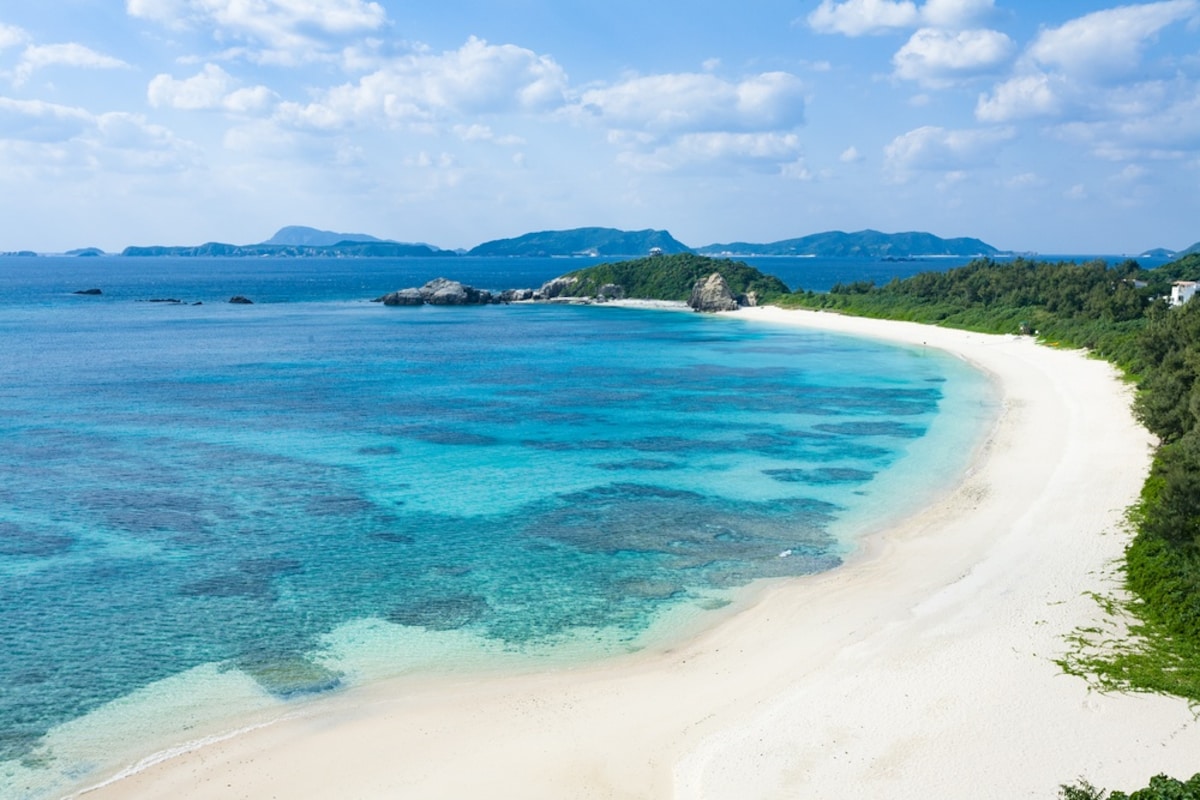
https://www.shutterstock.com/
Lying just off the coast of Naha is a pristine archipelago called the Kerama Islands. They feature some wonderful dive locations, isolated sandy coves and an abundance of verdant, tropical flora. The largest of these islands is Tokashiki, which can be accessed via boat or high-speed ferry from Tomari pier in Naha (reservations can be made online here).
Tokashiki is a great day trip option, offering panoramic views of picture-perfect coastline, undulating hiking trails and a selection of beaches to which most on the mainland can't even hold a candle! It's also one of the only Kerama Islands with a permanent population. As a result, it's well provisioned with shops, cafés, restaurants and eateries.
Sunset Beach
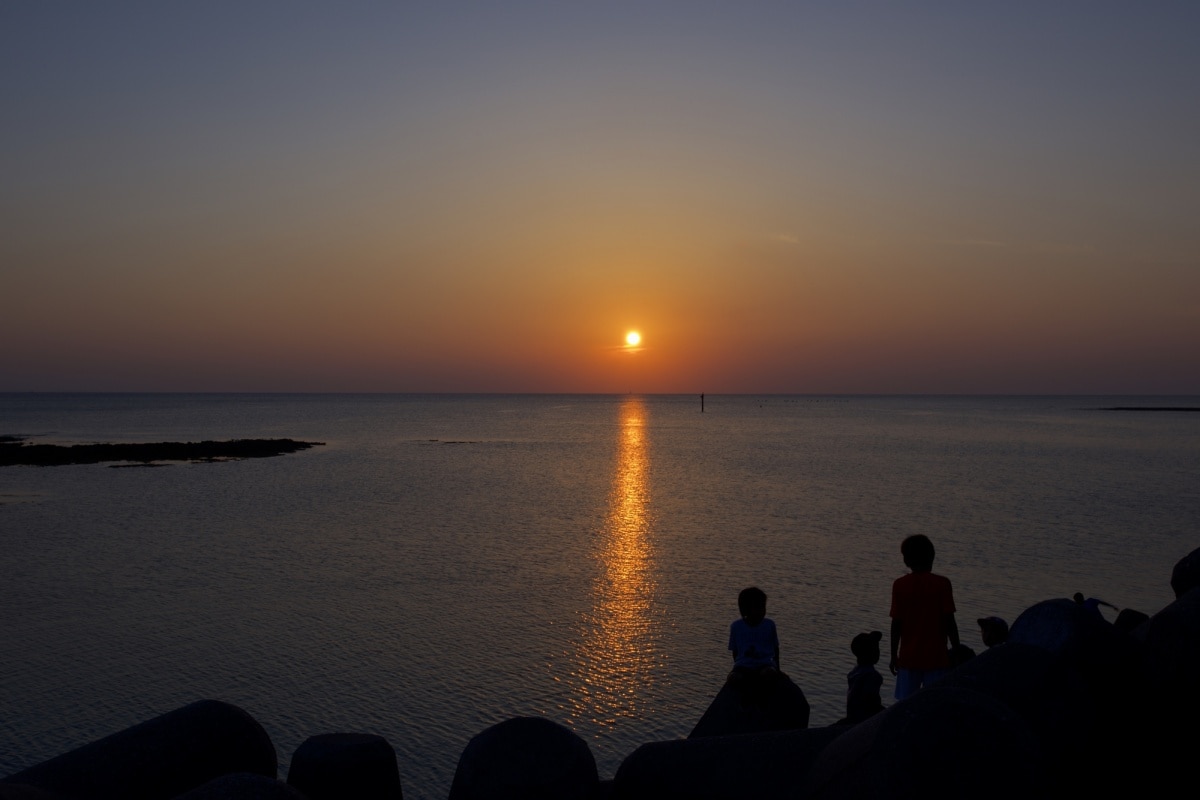
https://pixta.jp/
Sunset Beach is in the Chatan area of Okinawa, and is just a short skip up the west coast from Naha. The devil is in the details here—it's one of the best places in Okinawa to catch a glimpse of the setting sun. The wide sandy shores and azure waters provide a stunning swimming location, and the nearby beach bars mean you never too far from a fresh fruit cocktail.
Located near a few military bases, the Sunset Beach shows plenty of signs of the American influence on the island. It even rests on the outskirts of Okinawa's American Village. While the "village" itself can be a little tacky in parts, the location is without a doubt incredibly beautiful. The American-inspired eateries in the area may not be exciting if that's the food you're used to, but there are several great bars with balconies looking out over the vast Okinawan seascape. It's a great way to finish off your night before jumping in a cab to head back to the city.
Top 5 Must-Try Foods
Okinawan cuisine is unique within the scope of the wider Japanese culinary world. There's a few bites that pop up time and again, don't miss out on the opportunity to give them a shot!
5. Habushu
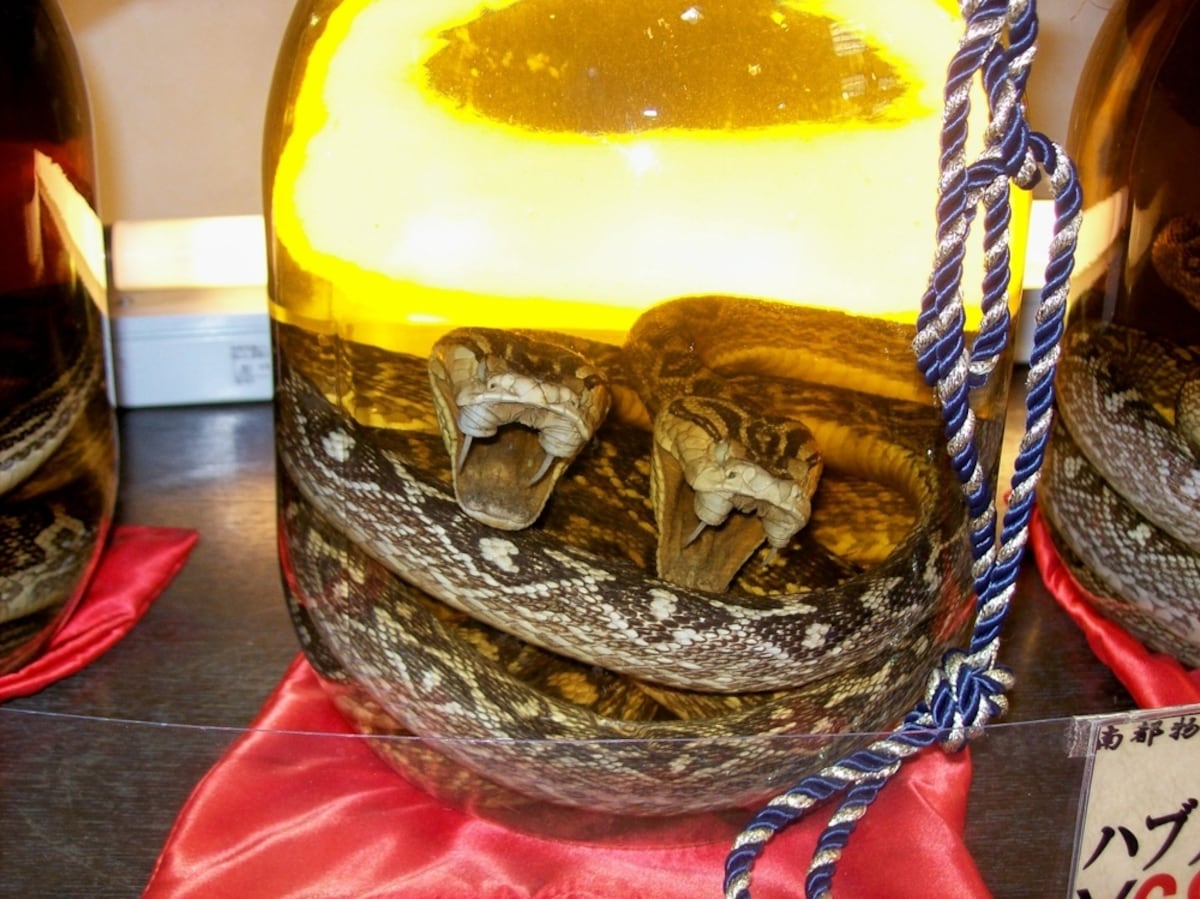
https://www.shutterstock.com/
I know, I know—this one is technically not food, but it just has to be included on the list! Habushu (ハブ酒) is an awamori-based liquor, which is itself an alcoholic beverage native to Okinawa made by distillation of long grain rice. Wherever you are on the island, you won't have to go far to find it!
Habushu is sometimes called "snake sake" in English (one guess as to why), and is a fusion of different liquors like whiskey or shochu with the venom from a trimereserus flavoviridis, more commonly referred to as a pit viper snake. This spicy cocktail is then infused with honey and herbs to give the drink its distinctly sweetened taste—it's not unlike a barrel-aged whiskey. Usually the snake is left inside the jar to give the drink an extra little punch, and for the obvious shock value. The lengthy brewing process ensures the venom becomes innocuous, so don't worry about keeling over in convulsions after the first sip!
4. Rafute
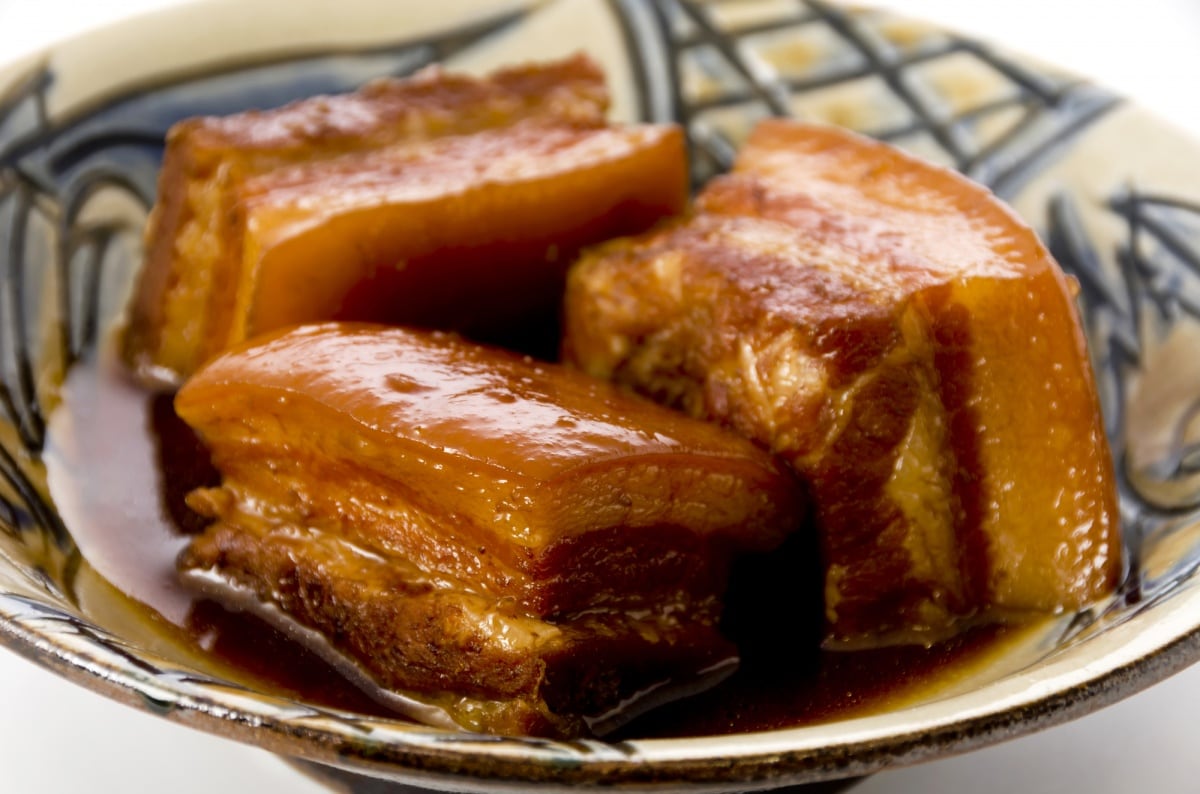
https://pixta.jp/
Another dish that is rife across Okinawa and scarcely seen anywhere else is rafute (ラフテー). Rafute is essentially stewed pork rib made from super-soft cuts of pork belly. It is thought to have been a common fixture on the menus of the Ryukyu royal court, though now it's predominantly a common izakaya finger food.
The meat is cooked in a broth of soy sauce, dashi and (sometimes) local awamori liquor, which gives it a fall-apart-in-your-mouth texture. From time to time you may get a dash of mustard on top of the meat, and the intense heat helps cut through the richness. Yunangi is a super-popular izakaya located in the entertainment hub of Kokusai-dori, and it serves up some of the best rafute around!
3. Okinawan Soba
Okinawan Soba is the local noodle soup. It's a ramen-like dish of thick soba (buckwheat) noodles and a light umami broth. Popular toppings include chashu pork, kamaboko (seafood cake), scallions, pickled ginger and various veggies.
Interestingly, this dish may have been around for as long as modern day ramen, thanks to the Ryukyu Kingdom's close links to the Chinese. So if you want to get a real taste of Okinawan history, the local soba might just be the way to do it. Again your options are aplenty, but there's one shop in particular that gets recommended time and time again. Shuri Soba—located just outside the perimeter of the Shuri-jo Castle ground—has been perfecting the dish since 1993. It's one of the most famous soba shops to be found anywhere on the island.
2. Goya Champloo
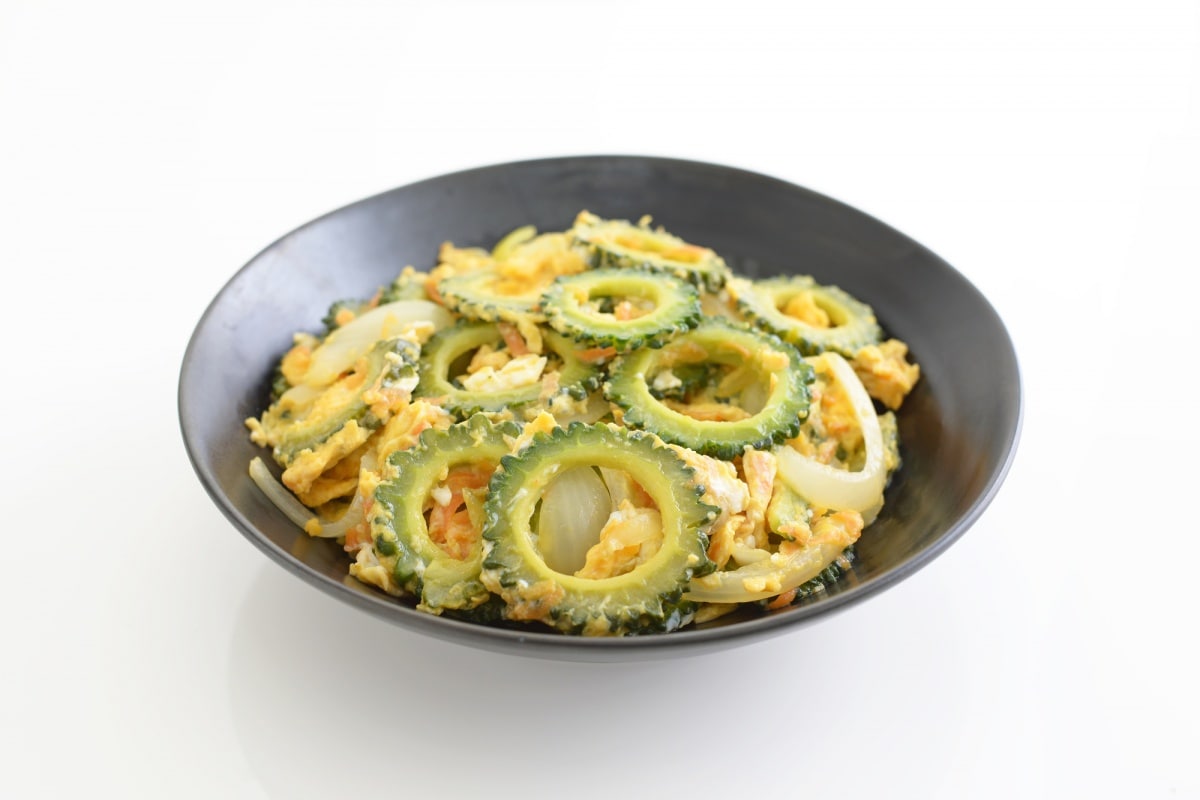
https://pixta.jp/
Goya champloo (ゴーヤチャンプルー) is another stalwart of Okinawan cuisine. Champloo is a stir-fried dish that is native to the islands, and comes in a variety of different styles. The true traditional style however, is when it's served with goya (bitter gourd, or bitter melon). Admittedly it has a little bit of an acquired taste, so adding a bit of soy or another dressing isn't a bad idea if you want to balance the slight bitterness.
A goya champloo stir-fry usually consists of goya (duh), egg, tofu, chashu pork and vegetables, including bean sprouts and carrots. All restaurants in Naha that specialize in local cuisine are sure to have some variation of champloo of the menu. But if you want to sample some of the city's best goya champloo in a traditional Japanese izakaya, check out Suitenro in Makishi.
1. Umi Budo

https://pixta.jp/
Umi Budo (海ぶどう・literally "sea grapes") consistently appears on menus up and down the island. If you're out for dinner at an izakaya in Naha, or just want a little salty snack to accompany your beer, then umi budo is a must-eat. Technically a type of seaweed, umi budo is a light dish of miniscule, juicy green pearls hanging from a vine like strand (hence the name).
They come in a variety of shades of green, from jade to emerald and forest to sea. Usually they are marinated in or accompanied by a mixture of vinegar mirin (a sweet cooking sake) and soy sauce dressing. They have a mildly salty taste, but are particularly renowned for their puchi puchi texture. Puchi puchi is an onomatopoeic term used to describe the way the juicy "grapes" pop open in your mouth. The best place to get your hands on some umi budo plucked fresh from the sea bed is at the Tomari Seafood Market in Naha.
How to Get Around Naha

https://pixta.jp/
Monorail
Naha is one of the few cities in Japan to utilize a monorail system. Also known as the Yui Rail, it conveniently glides past most of the city's main attractions, including stops at Shruri-jo Castle, Kokusai-dori and Naha Airport. 24-hour passes are ¥800, 48-hour passes are ¥1,400. Both grant unlimited use of the rail until their respective time periods have elapsed, and are a pretty good deal, considering fares start at ¥80.
Bus
Naha has an extensive bus network which is predominantly how tourists travel around the city (in the absence of continuously using cabs). The flat rate is ¥230 per journey, which is pretty cheap provided your traveling beyond reasonable walking distance (note that bus fares beyond the city limits will be more expensive however). If you are travelling in bigger groups around the city, cabs can serve as a relatively cheap alternative.
Bicycle
Naha is pretty small, relatively flat around the coastline and easily navigable. As such, renting a bicycle is a decent option for those who want to explore the city on two wheels and make the most of that tropical sunshine! And if you are qualified to drive a motorbike, there are plenty of options to rent one of those too. Visit Okinawa has a list of rental places in the city.
How to Get to Naha
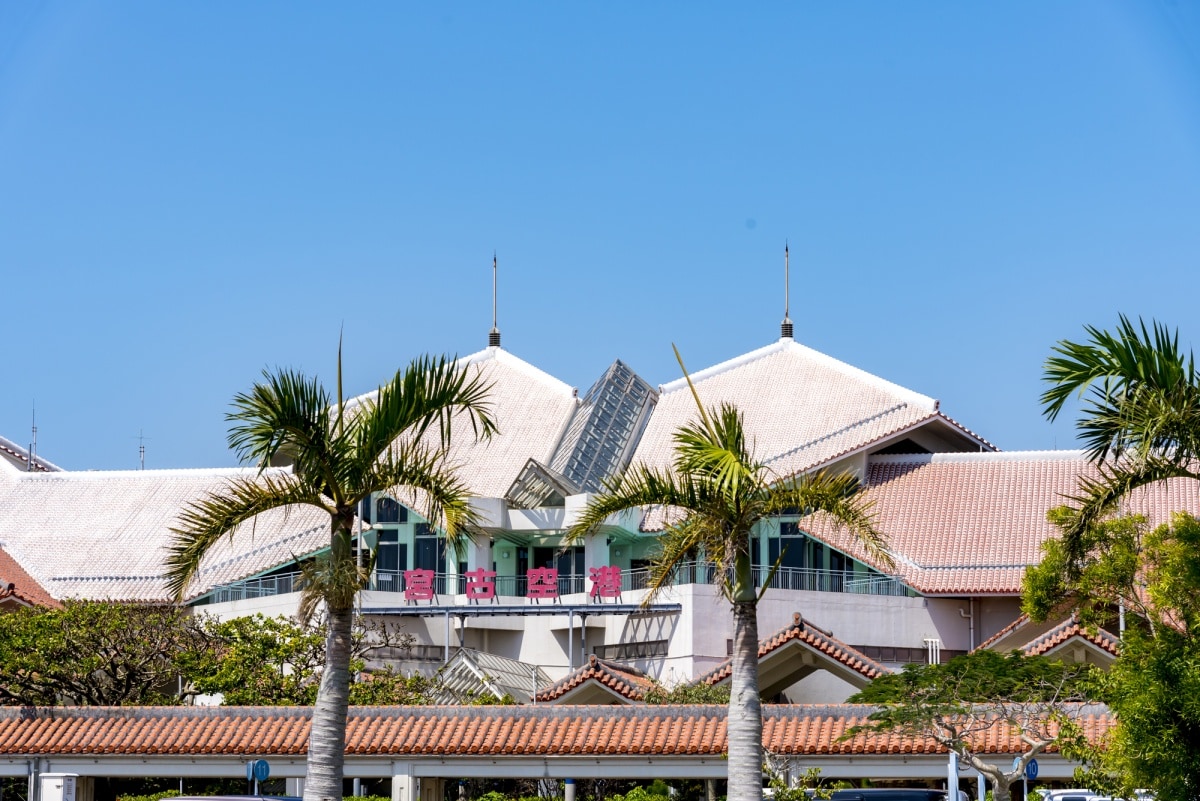
https://pixta.jp/
By Air
As Okinawa is a relatively isolated collection of islands, transport to Naha comes through two different avenues—by air and by sea. Naha has the largest airport in the prefecture (and 5th largest in Japan), fielding flights from major airports all over Japan, including Tokyo, Kansai, Kobe, Sendai, Fukuoka and Sapporo. If you are flying from within the country, you'll be glad to know that domestic air travel within Japan is typically a quick and seamless process! Flights from Tokyo to Okinawa can be as little as ¥5,000/6,000 (between US$50-60) when booked in advance, depending on the time of year and the carrier.
Alternatively you can fly to Okinawa externally from selected Asian countries including Korea, Taiwan, China and Thailand.
By Sea
There are regular ferries running from mainland Japan to Okinawa. They come from Tokyo, Osaka, Nagoya, Kobe, Fukuoka and Kagoshima. The weekly ferries between Tokyo and Okinawa take upwards of 44 hours and cost ¥22,000 (about US$200). The Okinawan ports at which the ferry boats stop can vary, so you may have to jump in a cab or on a bus following the journey.
Okinawa can be accessed internationally by boat from Taiwan, a trip that takes 16-19 hours. During peak season there's also a strong chance that the ¥15,600 fare will be considerably cheaper than plane tickets.
Naha Tips
Here are some final tips for your trip to Naha!
1. The aforementioned Tomari Seafood market is a great place to sample the city's seafood. It's the local alternative to Tokyo's fish markets in Toyosu and the old outer market in Tsukiji, and is a delicious and fun place to bop around.
2. The Okinawa Prefectural Museum is a great spot to learn more about the rich history of the islands.
3. Naha also has lots of great craft coffee bars. So if you're a coffee-lover, be sure to check out the local brews!
Have a great trip!


